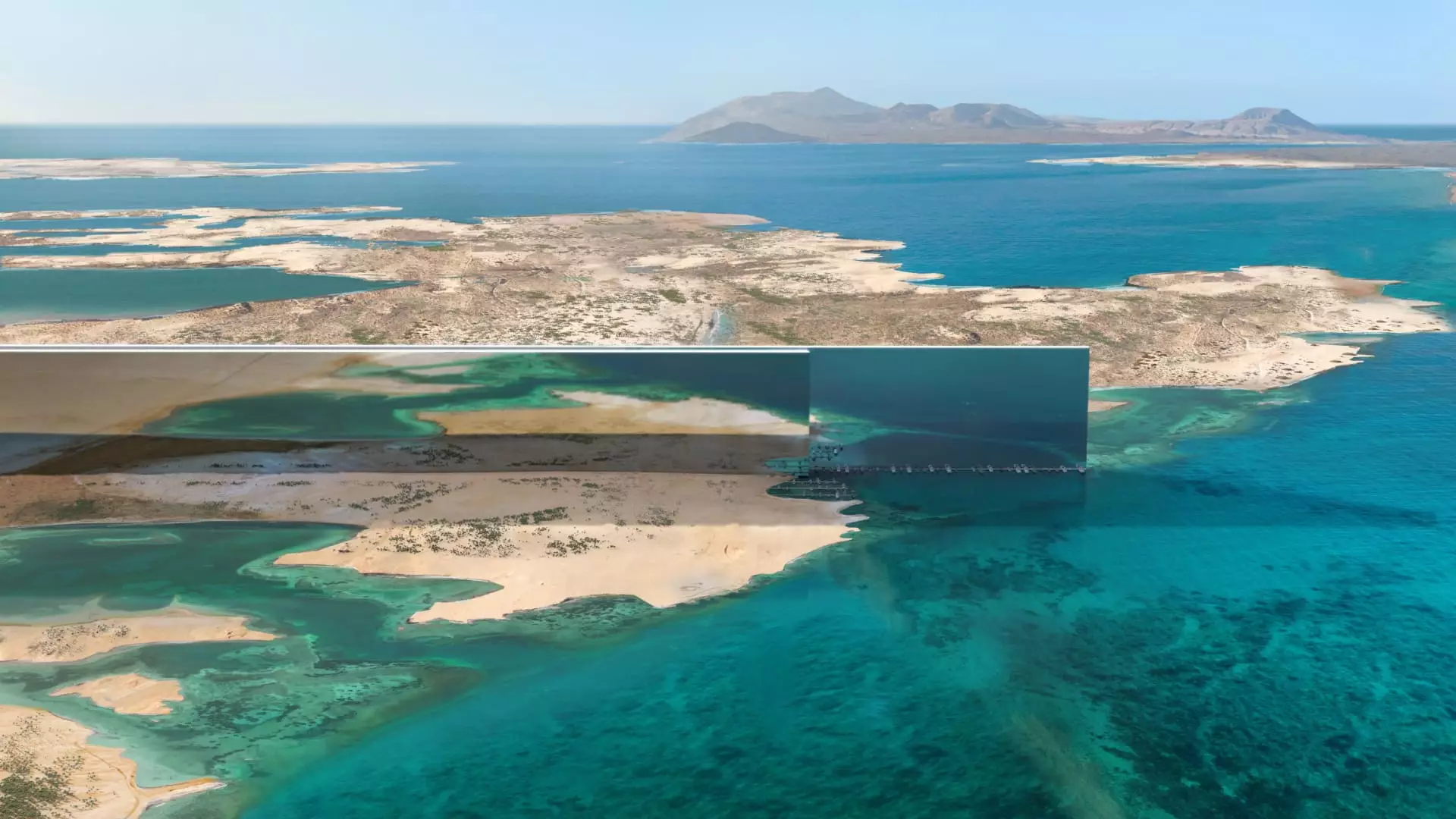Saudi Arabia’s ambitious plans to reshape its future through the development of Neom and its flagship city, The Line, epitomize a visionary yet fundamentally flawed approach to modernization. On paper, these projects promise a utopian existence where technological marvels collide with sustainability, and economic diversification becomes tangible. However, beneath the spectacle of cranes towering over the desert and glass skyscrapers piercing the horizon lies a creeping realization: the foundation of these grand visions rests on shaky grounds. The recent evaluation of The Line by Saudi’s sovereign wealth fund signals growing doubt and a need for recalibration—a reflection of the predicament that colossal infrastructure alone cannot cure a deeper economic and political fragility.
The narrative spun by Saudi leadership portrays these projects as harbingers of a new era, designed to lure in international investors and a young population eager for innovation. Yet, credible voices warn us that such visions are more fragile than they seem. The claim that The Line will house nine million residents seems more aspirational than realistic, especially given the current economic landscape. As oil prices tumble and global markets falter, the financial capability to sustain such deep, long-term investments is no longer a certainty. This discrepancy between ambitious dreams and economic realities reveals a disconnect—where the spectacle often overshadows feasibility, and the promise of future prosperity continues to loom as an elusive illusion.
The Fallacy of Technological Feasibility and Overconfidence
One of the core issues plaguing Saudi Arabia’s megastructures is an uncritical optimism that borders on hubris. For years, stakeholders have relied heavily on technologically ambitious plans, projecting an image of inevitability that may in fact be wishful thinking. The reliance on cutting-edge infrastructure—high-speed rail, artificial cities, and futuristic skyscrapers—assumes the technological capabilities are as advanced as the marketing suggests. But technological feasibility is rarely an assured outcome in projects of such grandeur, especially when they push the limits of current engineering and environmental sustainability.
Furthermore, these projects often suffer from inflated cost projections. When estimates like $1.5 trillion for Neom are floated, it masks the reality of mounting expenses, unexpected delays, and the inherent complexities of executing such an audacious plan. Historically, similar megastructures have faced significant overruns, forcing project timelines to stretch and budgets to balloon. In this context, the strategic review initiated by the government appears less a pursuit of clarity and more a necessary recalibration—a hard acknowledgment that the original assumptions may no longer stand up to scrutiny.
Spurred by overconfidence, consultants and planners often deliver overly optimistic forecasts, feeding into a cycle where inflated expectations set the stage for inevitable disappointment. The critique of “yes-men” in the planning process underscores a dangerous complacency that fails to critically analyze potential pitfalls upfront. Without honest appraisal, these projects risk becoming a costly echo chamber, sacrificing long-term sustainability for short-term symbolic victories.
The Political and Economic Dimensions of a Fragile Vision
At its core, the Neom initiative exemplifies an overreach driven by political opportunism rather than sustainable economic planning. Crown Prince Mohammed bin Salman’s drive to transform Saudi Arabia’s economic landscape aligns with broader geopolitical ambitions, yet it often neglects the fundamental economic realities faced by the kingdom. The recent slump in global oil prices exposes the fragility of relying heavily on extractive industries to fund these ventures—destined to challenge even the most optimistic financiers.
The decision to pause and reassess The Line’s future indicates a maturation process that is long overdue. Notably, this reconsideration is likely to result in scaled-back plans and longer timelines, revealing that the original vision was perhaps more a matter of national pride than pragmatic planning. The recognition that projects must adapt to market and technological realities is an honest step, yet it also exposes the risk of losing the initial momentum and political fervor that fueled their conception.
Additionally, the internal criticism about a “yes-man” culture hints at a problematic governance dynamic. When stakeholders prioritize production of positive forecasts over critical risk assessments, they undermine trust and accountability. This can erode investor confidence and weaken the social legitimacy of such transformative efforts. To succeed, Saudi Arabia must increasingly rely on transparent decision-making and realistic appraisals, something that appears to be a challenge given the current climate of optimism and political necessity.
The Future of a Vision in Limbo
The public plans for Neom and The Line have become a testament to the limits of unchecked ambition. Today, the site is more a symbol of hope and hubris rather than a tangible future. While the grand designs continue to captivate international attention, the reality reflects a more cautious, less certain path forward. Job cuts and strategic reviews indicate a shift from unbridled expansion to consolidation; however, whether this will lead to genuine sustainability or simply a form of strategic retreat remains unknown.
In essence, Saudi Arabia’s quest to reinvent itself through futuristic megastructures reveals both the courage of visionaries and the peril of overconfidence. It underscores the importance of aligning ambition with pragmatic planning—something that the kingdom must learn to balance if it hopes to avoid squandering the enormous potential domestically and internationally. As global economic conditions tighten the purse strings, the true test of Saudi Arabia’s transformative agenda will be whether it can adapt and evolve beyond its initial, overly optimistic blueprint.

